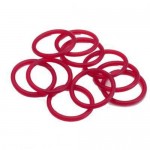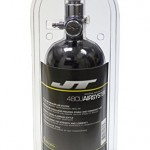Paintball CO2 vs HPA Compressed Air Tanks
The second biggest question that is asked next to ‘what paintball gun is best’ is that of paintball air tanks, specifically what is the difference between CO2 & HPA (Compressed Air) tanks.
We wanted to cover what you need to know about both types of paintball air sources, which one is best suited to paintball play, and the cost differences between both gas types.
What’s the difference between CO2 and Compressed Air Tanks?
It seems that lately it has become a trend between manufacturers and even online paintball retailers to throw about different terms in relation to air tanks, let’s face it, there are only 2 types you need to know.
So, if you happen to be looking online, you see that a paintball package has an Super N2 Nitro HPA Tank for example what you are really looking at is a compressed air tank!, simple enough right?
The first step is to demystify the terms used relating to paintball air tanks:
a) CO2 is an abbreviation for Carbon Dioxide (CO2 can be become unstable at increased temperatures)
b) Compressed Air Tanks are often refereed to using the terms: High Pressure Air (HPA), Nitrogen, N2 or Nitro.
Now we have cleared up both of the paintball air source types you really only need to understand that whichever tank type you use the basic premise of both is to propel the paintball balls from the marker with enough force to hit a target at range.
The CO2 tank:
Carbon dioxide (CO2) is the gas first used in paintball guns, back in the 1980’s, it is still used today as it is a cheaper propellant option to compressed air.
The way that CO2 works in your paintball marker is that the carbon dioxide tank or cylinder holds a liquid form of the gas which then turns to gas once it escapes. A paintball marker has a valve that controls the on/off state of any escaping CO2 and a regulator that the gas passes through to then fire your paintball marker.
However, CO2 (carbon dioxide) does have the disadvantage of being inconsistent and unstable at both higher operating temperatures and within rapid fire use. Let me explain, when you use CO2 the liquid expands into a gas and it gets colder therefore upon a player firing in rapid bursts the CO2 gives varying pressure output to your gun and this inconsistent propellant pressure affects the firing performance.
There are 2 common types of paintball CO2 tanks which include the refillable cylinders and also the throw away 12 gram cartridges usually available in packs.
However, the one big advantage of CO2 is that it costs significantly less in comparison to a HPA tank, but it is also heavier, bulkier, and not so good on performance – in our opinion, if your budget allows then always opt for a lightweight HPA tank.
The Compressed Air Tank (HPA):
The compressed air tank, often referred to by the term HPA tank, became popular in the late 1990’s when players got frustrated with the limitations and drawbacks of their CO2 tanks.
Initially, HPA tanks were filled with nitrogen gas, this is why the term Nitro & N2 is still often used. More often a HPA tank will be filled with highly compressed air often massively pressured into the tank up to 4,500psi or beyond, the pressure rating of a particular tank is governed by its strength and build quality.
The high end modern paintball markers have developed significantly around the use of HPA tanks which allows them a much more consistent performance in all weathers, longer range and rapid fire capabilities.
However, you also do have disadvantages with high pressure air tanks (HPA) with the most significant one being not everywhere you go has a compressor that can fill a tank with 3,500psi or beyond. Most tyre fitting places and gas station air pumps generally go no higher than 180psi – it is a good idea to check with your paintball field if they can refill your choice of high pressure tank.
Top Tip: You can fill a HPA tank with a scuba tank – with a scuba fill station attached you can refill your paintball tank maybe 20 or 30 times over, this is also how they fill tanks at most paintball fields.
You can take a look at the range of air tanks, both CO2 and HPA, from top brand manufacturers like Ninja, Empire, OZ, Air Venturi, Guerrilla in our paintball tanks and regulators online shop category.
We recently posted an awesome video in our blog which walks you through the contents of a player’s complete paintball gear bag including a recommended paintball air tank, it’s definitely worth a watch.
Lastly, please see the video directly below this article which gives a short but concise visual explanation of the differences between Paintball CO2 vs HPA tanks.
 Paintball Tips & Gear Online – #1 for Paintballing Players Paintball Tips Online
Paintball Tips & Gear Online – #1 for Paintballing Players Paintball Tips Online 







